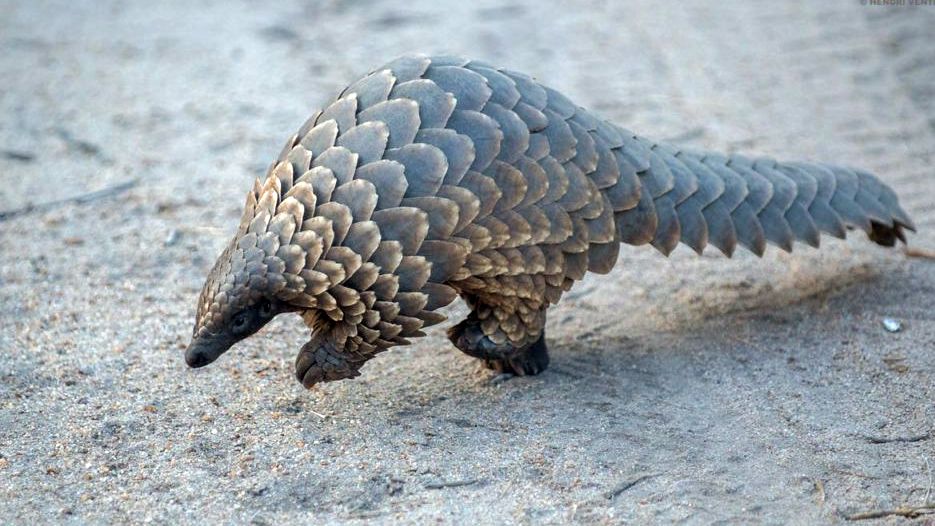Cowboy Boots Purchased in the U.S. Played Part in Pangolins’ Decline
Before 2000, imported pangolin skins were widely used in the production of exotic leather accessories
/https://tf-cmsv2-smithsonianmag-media.s3.amazonaws.com/filer/e5/00/e500837f-f4a3-40b5-9163-3c2e4726f336/cowboy-boots-exotic-trade.jpg)
Pangolins, coveted for their scales and meat, are the world’s most trafficked mammal. Today, much of this illegal trade is centered in Asia and Africa, but as a new study published in Conservation Science and Practice reports, the United States played an oft-overlooked role in the scaly anteaters’ decline, importing a high volume of pangolin skins for use in exotic leather accessories including cowboy boots, belts and wallets.
Although the country’s pangolin market has taken a sharp downturn since 2000, when the international community enacted a zero-export quota on Asian pangolins, illegal leather trade still occurs on a smaller scale. Per the study, co-authored by Sarah Heinrich, Joshua V. Ross and Phill Cassey of Australia’s University of Adelaide, U.S. Fish and Wildlife Service records dating to between 1999 and 2015 reveal a total of 163 trade incidents—most taking place before 2000—involving an estimated 21,411 pangolins.
According to Rachel Nuwer of National Geographic, limitations on pangolin trade have increasingly led U.S. manufacturers to seek out a new leather source: the arapaima, an Amazonian freshwater fish capable of growing up to 10 feet in length and weighing more than 440 pounds. Both animals’ skin yields a diamond pattern when tanned.
“While the US trade in pangolin products has declined since 2000, arapaima leather trade has increased significantly since 2011,” Heinrich explains in a press release. “We suspect that pangolin leather may now be substituted by arapaima products.”
In total, Heinrich and her colleagues found a total of 130 records involving 5,524 arapaimas. Almost all of these incidents dated to after 2011.
Speaking with National Geographic, Heinrich says the researchers are concerned that arapaimas, overexploited much like their predecessors in the exotic leather market, could become endangered in the near future.

“Considering the huge historic popularity of pangolin in the U.S., there is likely a big market there for arapaima,” the conservation scientist notes. “The trade may quickly get out of hand.”
As the team writes in the study, arapaimas faced threats even before this uptick in trade. Local fishermen harvest the animals for commercial purposes and development places their habitats at risk. Leandro Castello, a fisheries ecologist at Virginia Tech who was not involved in the new research, further tells Nuwer that it remains unclear how much of the arapaima leather legally imported into the U.S. is actually obtained sustainably.
To better gauge how widespread pangolin and arapaima leather products are within the U.S., Heinrich and her fellow researchers analyzed 478 eBay listings posted by domestic sellers. Per Nuwer, more than 65 percent of these listings—including 168 involving an estimated 476 pangolins and 154 involving an estimated 2,873 arapaimas—appeared to be genuine.
The average starting price for pangolin items, most of which were listed as used, was $544. The average starting price for arapaima products, meanwhile, was $390, and most of these leather accessories were marketed as new. In some cases, pangolin was mislabeled as arapaima or print leather, while in others, print leather was falsely advertised as genuine pangolin or arapaima. Even if the pangolin objects listed on eBay were acquired legally at the time of purchase, the scientists note that reselling them now would require permits or provenance paperwork—none of which were referenced on the sellers’ portals.
Although many conservationists view the leather trade as an insignificant factor in pangolins’ decline, Dan Challender, a zoologist at the University of Oxford who was not involved in the study, tells Nuwer that the phenomenon was “a threat to the species, for sure.”
The arapaima’s current status is nowhere near as dire as the pangolin’s, but this fact will not save the fish from facing heightened threats, perhaps as a result of thriving exotic leather trade, moving forward.
“The worst-case scenario is that arapaima suffer in the wild as a consequence of actions taken to protect pangolins,” Challender conclude. “This case study demonstrates the complexity of controlling trade in wildlife, especially when it takes [place] over different continents, wide geographies, and on a long-term basis.”
/https://tf-cmsv2-smithsonianmag-media.s3.amazonaws.com/accounts/headshot/mellon.png)
/https://tf-cmsv2-smithsonianmag-media.s3.amazonaws.com/accounts/headshot/mellon.png)